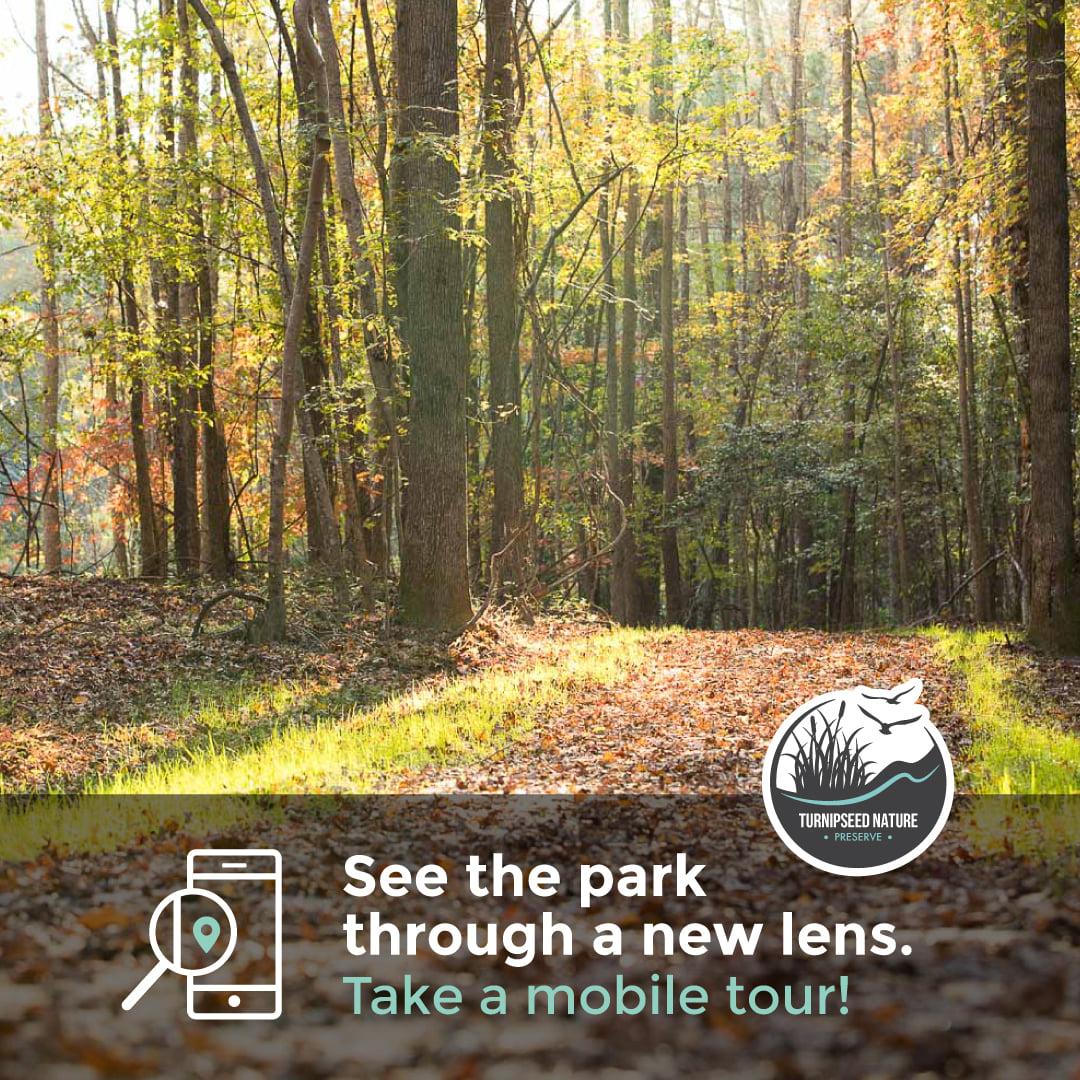
The preserve is identified as a significant natural area in Wake County as part of the larger Marks Creek area by the North Carolina Natural Heritage Program. Turnipseed is also designated as a WakeNature Preserve for its ecological and geological significance. The landscape occurs in a transitional area between the coastal plain and the piedmont regions of North Carolina.
Special natural features include:
- Granite rock outcrops and boulders. Enjoy looking at and touching these unique geological formations along the Boulder Trail.
- A variety of high quality habitats: small wetland communities, floodplain forest, oak forest, mixed pine-hardwood forest, fallow agriculture fields and meadows.
- Many wildlife species, including priority species of the N.C. Wildlife Resources Commission Wildlife Action Plan.
Some species you may find include: beavers, otters, wood ducks, red-shouldered hawks, prothonotary warblers, common yellowthroats, white-eyed vireos, Louisiana water thrushes and a variety of frogs, salamanders and reptiles.
Turnipseed Tree Tour

Visit our story map tour here to learn more about our native trees in the preserve!
Interesting Geology
Much of eastern Wake County is underlain by granite of the Rolesville batholith, which is one of the largest east of the Rockies. A batholith is a very large body of granite. The Rolesville batholith was formed about 300 million years ago, when older metamorphic rocks were intruded by granitic magma that cooled and hardened.
You can see and touch this geology along the Boulder Trail at the preserve. The boulders and outcrops you will find are mostly medium-grained biotite granite, but also very coarse-grained granite. This area is the last major exposure of crystalline rock heading east toward the Coastal Plain.
The Marks Creek Community History
This history includes the area between Turnipseed, Lake Myra, Buffalo and Eagle Rock roads in southeastern Wake County. Three towns were settled in the early 1800s, based on when they received a post office. Eagle Rock was established in 1837 and was the primary commercial center through most of the 19th century. It was followed by Shotwell in 1883, and, finally, Wendell was established in 1891 and grew quickly in importance due to its tobacco market.
Some of the land that is now part of the preserve was historically farmed. Many families were important to the settlement and development of the Marks Creek community. In the early 1900s, families built their houses together, rather than hiring builders.
The area was more rural in the early 1900s, when cars were just becoming popular, and neighbors looked after one another because they were so far from any towns.
Since not everyone owned a vehicle, children often went to town in groups with the families who ;did. Since some families could not afford large farm trucks, the ones with a large truck hauled all of the crops to market.
Each family had vegetable gardens, chickens, at least one dairy cow, and a few hogs. Children owned few store-bought toys, played in the woods, and fished in the creek in their free time. If the tobacco harvest was late, school would start a little later than usual.
You can see evidence of farming at the preserve. All of the meadows used to be used to grow tobacco and soybeans.
Where did the name Turnipseed come from?
The name for the preserve came from Turnipseed Road, which runs along the south side of the preserve. The Turnipseed family established a farm in the 1920s, and in the 1960s the road was named for them. This road was also a main thoroughfare in the Marks Creek community and was previously known as the Wendell-Raleigh Road. It was also known as Burned Mill Road, and we are still investigating the history of that name.
If you have any information about the history of the preserve or the greater Marks Creek Community, we would enjoy hearing from you. Please email naturepreserve@wake.gov.
Discover Nature at Wake County Parks and Preserves
NRID – Natural Resources Inventory Database
Want to explore the wildlife and plants seen at our Wake County Parks and Preserves from home? Check out the Wake County Natural Resources Inventory Database! Anyone can use it – whether you're a birdwatcher, teacher, student, citizen scientist or just curious about nature. Explore data and photos, print checklists, or discover fun nature facts here.

